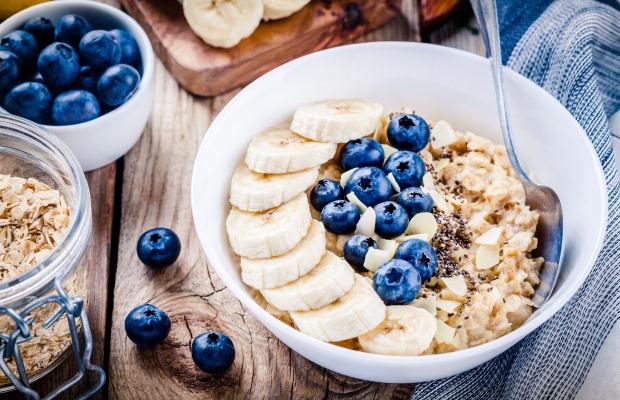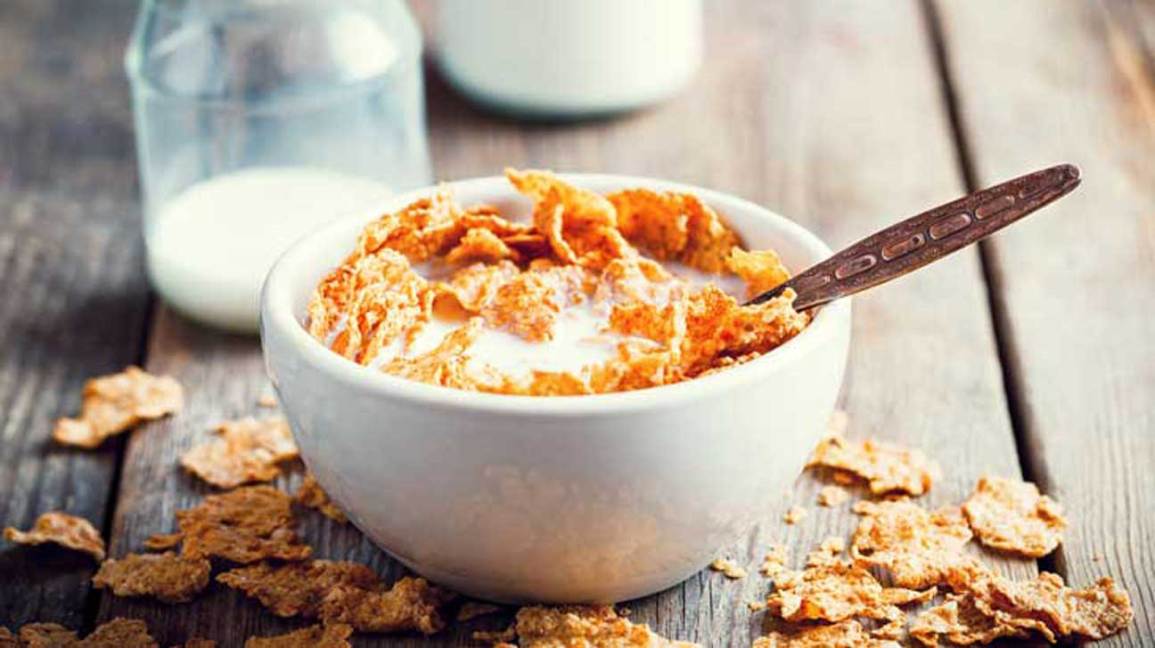What Cereals are Healthy to Eat? Healthy cereals include whole grain oats, bran flakes, and quinoa-based cereals. These options are rich in fiber and essential nutrients.
Choosing healthy cereals is crucial for a nutritious breakfast. Whole grain oats are excellent for heart health and provide long-lasting energy. Bran flakes are another great option, offering high fiber content that aids digestion. Quinoa-based cereals come packed with protein, making them ideal for a balanced diet.
Always check the nutrition label for added sugars and artificial ingredients. Opt for cereals with minimal processing and natural ingredients. Adding fresh fruits or nuts can boost the nutritional value of your breakfast. By making smart cereal choices, you set the tone for a healthier day.
The Quest For Healthy Cereals
What Cereals are Healthy to Eat? Finding a healthy cereal can be a daunting task. There are many options on the market. Some cereals are packed with sugar and unhealthy fats. But don’t worry! We’re here to help you find the healthiest choices.
Why Cereal For Breakfast?
Cereal is a popular breakfast option. It is quick and easy to prepare. Many people love it for its convenience. A bowl of cereal can provide essential nutrients. It can set the tone for a healthy day.
Nutritional Benchmarks For Healthy Cereals
Not all cereals are created equal. Here are some nutritional benchmarks to look for in a healthy cereal:
- Whole Grains: Choose cereals that list whole grains as the first ingredient.
- Fiber: Aim for cereals with at least 3 grams of fiber per serving.
- Sugar: Opt for cereals with less than 6 grams of sugar per serving.
- Protein: Look for cereals that offer at least 3 grams of protein per serving.
| Brand | Whole Grains | Fiber (g) | Sugar (g) | Protein (g) |
|---|---|---|---|---|
| Brand A | Yes | 4 | 5 | 3 |
| Brand B | Yes | 3 | 4 | 4 |
| Brand C | No | 2 | 8 | 2 |
Choosing the right cereal can make a big difference. Look for the nutritional benchmarks and compare brands. A healthy breakfast can start your day right.

Credit: www.bhf.org.uk
Whole Grains Lead The Way
What Cereals are Healthy to Eat? Whole grains are a great choice for healthy cereals. They offer more nutrients and keep you full longer. Let’s explore the benefits and best options.
Benefits Of Whole Grains
Whole grains are packed with important nutrients. They contain fiber, vitamins, and minerals. These help your body stay strong and healthy.
- Fiber: Helps with digestion and keeps you full.
- Vitamins: Essential for energy and growth.
- Minerals: Support strong bones and teeth.
Eating whole grains can also reduce the risk of some diseases. They can help lower heart disease and diabetes risks.
Top Whole Grain Cereals
| Cereal | Key Benefits |
|---|---|
| Oatmeal | High in fiber, supports heart health |
| Whole Wheat Flakes | Rich in vitamins, good for energy |
| Quinoa Puffs | Protein-packed, gluten-free option |
| Barley Cereal | Helps with digestion, low in fat |
These cereals are tasty and nutritious. Choose whole grains for a healthier breakfast.
Sugar Content: The Sweet Culprit
What Cereals are Healthy to Eat? Understanding the sugar content in cereals is essential for a healthy diet. Many popular cereals contain high levels of sugar. This can lead to health problems over time. It is important to check the labels on cereal boxes. Knowing what to look for can help you make better choices.
How Sugar Affects Nutrition
High sugar in cereals can affect your nutrition negatively. It can lead to weight gain and increase the risk of diabetes. Sugar provides empty calories without essential nutrients. This means you get energy, but no vitamins or minerals. Over time, this can impact your overall health.
Choosing Low-sugar Cereals
Choosing low-sugar cereals can help improve your diet. Look for cereals with less than 5 grams of sugar per serving. Here are some tips to find healthier options:
- Check the nutrition label for sugar content.
- Aim for cereals with whole grains as the first ingredient.
- Avoid cereals with added sugars like corn syrup or honey.
| Cereal Brand | Sugar Content (per serving) |
|---|---|
| Cheerios | 1 gram |
| Special K Original | 4 grams |
| Weetabix | 2 grams |
By choosing cereals with low sugar content, you can enjoy a healthier breakfast. Always read the labels carefully. Making small changes can have a big impact on your health.
Fiber-filled Choices
Choosing the right cereal can make a big difference to your health. One important factor is fiber. Fiber helps you feel full and supports digestion. Here, we will explore why fiber is important and which cereals are the best choices.
The Importance Of Fiber
Fiber plays a key role in keeping our digestive system healthy. It helps in preventing constipation and maintaining a healthy weight. A diet rich in fiber can also lower the risk of heart disease. Kids and adults both need enough fiber daily.
High-fiber Cereal Options
High-fiber cereals are an excellent way to start your day. Below are some popular choices:
- Oatmeal: Rich in soluble fiber, helps in lowering cholesterol.
- Bran Flakes: Packed with both soluble and insoluble fiber.
- Whole Grain Cheerios: Low in sugar and high in fiber.
- Shredded Wheat: Contains no added sugar, high in fiber.
Here’s a table comparing the fiber content of these cereals:
| Cereal | Fiber Content (per serving) |
|---|---|
| Oatmeal | 4 grams |
| Bran Flakes | 5 grams |
| Whole Grain Cheerios | 3 grams |
| Shredded Wheat | 6 grams |
Including these cereals in your diet can boost your daily fiber intake. Remember to check the labels for added sugars and other ingredients.
Protein-packed Mornings
What Cereals are Healthy to Eat? Starting your day with a protein-rich breakfast boosts your energy. It helps keep you full and focused. Cereals can be a great source of protein. Let’s explore the best options for a power-packed morning.
Protein In Cereals
Not all cereals are equal. Some are loaded with sugar and low in nutrients. Look for cereals with high protein content. Check the label for protein per serving. Aim for at least 5 grams of protein per serving.
| Cereal Type | Protein per Serving (g) |
|---|---|
| Oats | 6 |
| Quinoa Flakes | 8 |
| High-Protein Granola | 10 |
| Whole Wheat Cereal | 7 |
Protein-rich Cereals For Energy
Choose cereals that give you lasting energy. Some top choices include:
- Oats: A classic choice, rich in fiber and protein.
- Quinoa Flakes: Packed with protein and all essential amino acids.
- High-Protein Granola: Made with nuts, seeds, and protein powder.
- Whole Wheat Cereal: Offers a good balance of protein and fiber.
These options help you feel full and energetic. They are also easy to prepare. Add fruits, nuts, or yogurt for extra nutrition.
Hidden Ingredients To Avoid
Cereals are a popular breakfast choice. But, not all cereals are healthy. Many contain hidden ingredients that can harm your health. Knowing these ingredients helps you make better choices for a nutritious start to your day.
Artificial Additives
Artificial additives are common in many cereals. These include:
- Artificial Colors: These make cereals look more appealing. But they may cause hyperactivity in children.
- Artificial Flavors: These enhance the taste of cereals. Yet, they offer no nutritional value.
- Preservatives: These extend shelf life. They may, however, affect your health if consumed in large amounts.
Healthier Alternatives
Choose cereals with natural ingredients. Here are some healthier options:
| Ingredient | Benefits |
|---|---|
| Whole Grains | Provide fiber, vitamins, and minerals. |
| Natural Sweeteners | Honey or maple syrup are better than refined sugar. |
| Fruits and Nuts | Add flavor and extra nutrients. |
Look for cereals with fewer ingredients. The shorter the list, the better. Avoid those with names you can’t pronounce.
Reading Nutrition Labels
What Cereals are Healthy to Eat? Reading nutrition labels helps you choose healthy cereals. It is important to know what to look for. This guide will help you understand key nutrients and serving sizes.
Key Nutrients To Look For
Check for essential nutrients on the label. Some key nutrients to look for include:
- Fiber: Aim for at least 3 grams per serving.
- Protein: Look for cereals with 5 grams or more.
- Vitamins and Minerals: Choose cereals fortified with vitamins A, C, and D, and minerals like iron and calcium.
Understanding Serving Sizes
Serving sizes can be tricky. Always check the serving size on the label. This helps you understand how much you are eating.
| Nutrient | Per Serving | Daily Value (%) |
|---|---|---|
| Fiber | 3g | 12% |
| Protein | 5g | 10% |
| Vitamin A | 500 IU | 10% |
Remember to compare these values with your daily needs. This ensures you get a balanced diet.

Credit: www.menshealth.com
Top Picks For Healthy Cereals
Finding healthy cereals can be tricky. Many options are loaded with sugar. The right cereal should be nutritious and tasty. Here are the top picks for healthy cereals.
Best Overall
For the best overall healthy cereal, choose Cheerios. It’s low in sugar and high in fiber. Cheerios also contain essential vitamins. It’s perfect for a balanced breakfast.
- Low sugar content
- High in fiber
- Contains essential vitamins
Best For Kids
Kids love sweet cereals, but they are often unhealthy. Choose Kashi GO for a healthy option. It has a good mix of protein and fiber. Kids will enjoy its sweet flavor without the guilt.
- Sweet flavor kids love
- High in protein
- Rich in fiber
Best Gluten-free Options
For those needing gluten-free cereals, try Nature’s Path Organic. It offers a variety of flavors. Each option is free from gluten and packed with nutrients.
| Flavor | Key Nutrients |
|---|---|
| Maple Sunrise | Fiber, Vitamins |
| Fruit Juice Corn Flakes | Iron, Fiber |

Credit: www.asweetpeachef.com
Frequently Asked Questions
Which Cereals Are The Healthiest?
The healthiest cereals include whole grain oats, bran flakes, shredded wheat, and muesli. Choose options low in sugar and high in fiber.
Are Cheerios Healthy?
Yes, Cheerios are generally healthy. They are low in sugar and high in fiber. Whole grain oats provide essential nutrients. Always check labels for added sugars.
Which Cereals Do You Usually Eat Everyday?
I usually eat oatmeal, bran flakes, and granola every day. They are healthy, tasty, and keep me full longer.
Is Raisin Bran A Healthy Cereal?
Raisin bran can be healthy. It provides fiber, vitamins, and minerals. Watch for added sugars and portion size. Choose brands with less sugar for a healthier option.
Conclusion
Choosing healthy cereals can significantly improve your diet. Opt for whole grains, low sugar, and high fiber options. Read labels carefully to avoid hidden sugars and unhealthy additives. By making informed choices, you can enjoy a nutritious and delicious breakfast every day.
Your health and well-being will thank you.




Leave a Reply